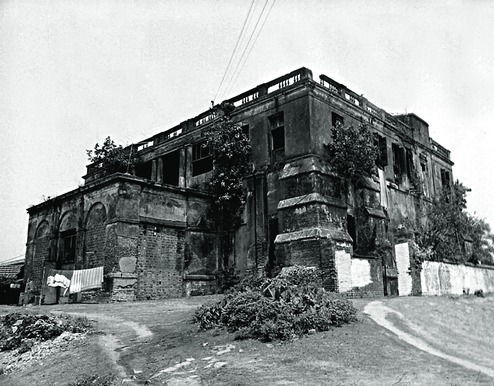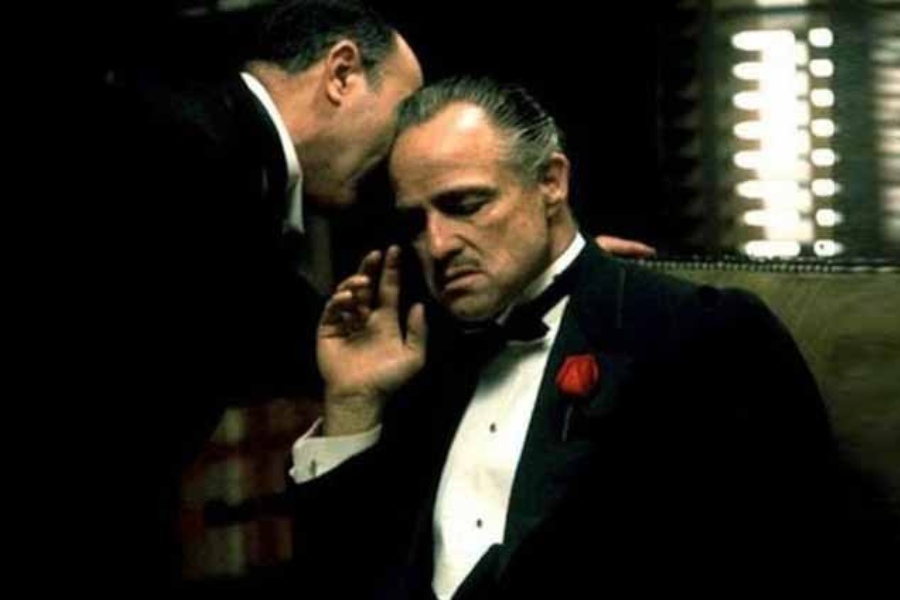

.jpg)

During an informal discussion on north Calcutta's Dumdum area, Gour Kumar Moulick says, "Do you know the plan of the original Dumdum Road was made by Lady Clive?" He has read it somewhere.
Moulick is an advertising man by profession, and a Dumdum expert by passion. His interest has propelled him to explore documents and literature in different libraries in different parts of the country. It was partly due to his efforts that the Archaeological Survey of India (ASI) took over Clive House in these parts in 2003.
Standing on a mound, which was once surrounded by a moat, Clive House on Rashtraguru Avenue is one of the oldest buildings in Bengal. In earlier times it was known as Dumdum House, later it came to be known as burra kothi or the grand house. For many years the heritage structure had remained shrouded in obscurity. And even post ASI intervention, things are not vastly improved.
And yet, it needn't be so. Robert Clive was an important figure. During his first governorship (1755-60) he won the Battle of Plassey and, in a sense, laid the foundation of British dominion over the subcontinent.
We strain our eyes to see the house through the jungle of concrete and overgrowth. A neighbourhood club formed in 1951 has taken over the grounds adjacent to the mound. The neighbourhood itself is choc-a-bloc with multistoreys. Photographs from the early 1980s bear evidence that the locality was sparsely populated. In Clive's time, it must have been even more so. There are suggestions that this is why he chose the house.
In his 2015 speech at the Oxford Union, Shashi Tharoor said of Clive - "...the British had the gall to call him Clive of India as if he belonged to the country, when all he really did was to ensure that much of the country belonged to him." This house too was in a way, loot.










According to Moulick, Clive spotted the structure on his way to Nawab Siraj-ud-Daullah's camp and sent his men to order the occupants to vacate by the time of his return.
In The History of the War in Bengal, first published in 1798, Robert Orme writes about the mound on which the house is built.
Lore has it that the mound was built overnight. Which Hercules did it is not known, nor the details of who constructed or owned Clive House before it became so. But a study has revealed that the bricks date to a period between the late 17th and the early 18th century. That has ruled out the theory that the original house may have been a Dutch or Portuguese factory or godown. Artefacts found in the mound point to a civilisation 2,200 years old. The articles unearthed belonged to the Sunga-Kusana and the Gupta and post-Gupta periods.
Clive used this building as his country house from 1757 to 1760, during his first term in Bengal. Only four years before that he had gotten married to Margaret Maskeyline, a close friend's sister, on February 21. She was 17 at the time and he, 26. It is difficult to imagine them and their lives here, now.
What is known, however, is that the house was originally a single-storey structure equipped with underground chambers or cellars. It even had an underground tunnel leading up to another house in modern-day Mall Road area. Clive added a floor and extended the house. On the ground floor was his office, and on the first floor, the residential quarters and a nautch ghar. He also extended the grounds, laid out a manicured garden and added a portico to the new southern entrance.
Moulick points out that most of the houses Clive lived in had their entrances to the south - if they didn't, he made sure they did.
The debris concealing the semi-circular stairs leading to the entrance at the north was cleared and the stairs renovated by the ASI. "They have cleared other things too," grimaces Moulick. Pointing at the arched doorways he says, "Two varieties of bricks - the original arches and the ones used to block them - were clearly visible." The ASI removed the latter and has put up bamboo barriers instead.
At some point, post-Independence, along with the colonial narrative, the Clive House narrative also got overlaid. Biswadip Dutta and brother Dibyadip, old residents of the area, remember running on the parapets and flying kites from the terrace as children. Moulick tells us, and it is common knowledge too, that after the British left, 20-25 families from erstwhile East Bengal took shelter here. Some still live on the peripheries, while others moved out when parts of the ceiling collapsed in the 1990s. An Air Training Institute had taken over the first floor at one stage, it's not there now.
In 2006, Bimal Bandopadhyay, the then superintending archaeologist of ASI, Calcutta Circle, had told The Telegraph they hoped to complete the task of restoration of the house in two years. The building was to be turned into a museum. But there has been no sign of any work for several years now.
Walking through the overgrowth, one tries to imagine Margaret playing her harpsichord in these grounds, Clive enjoying his bejewelled hookah - they were set with rubies and diamonds, and together the two of them entertaining Bengal's white gentry here. On balmy evenings, a well-conceived son-et-lumiere could have recreated much of it. The clip-clop of hooves, the exchange between Clive and Mir Jafar, the chatter of Margaret's mynah... The possibilities seem endless, the indifference, criminal.










